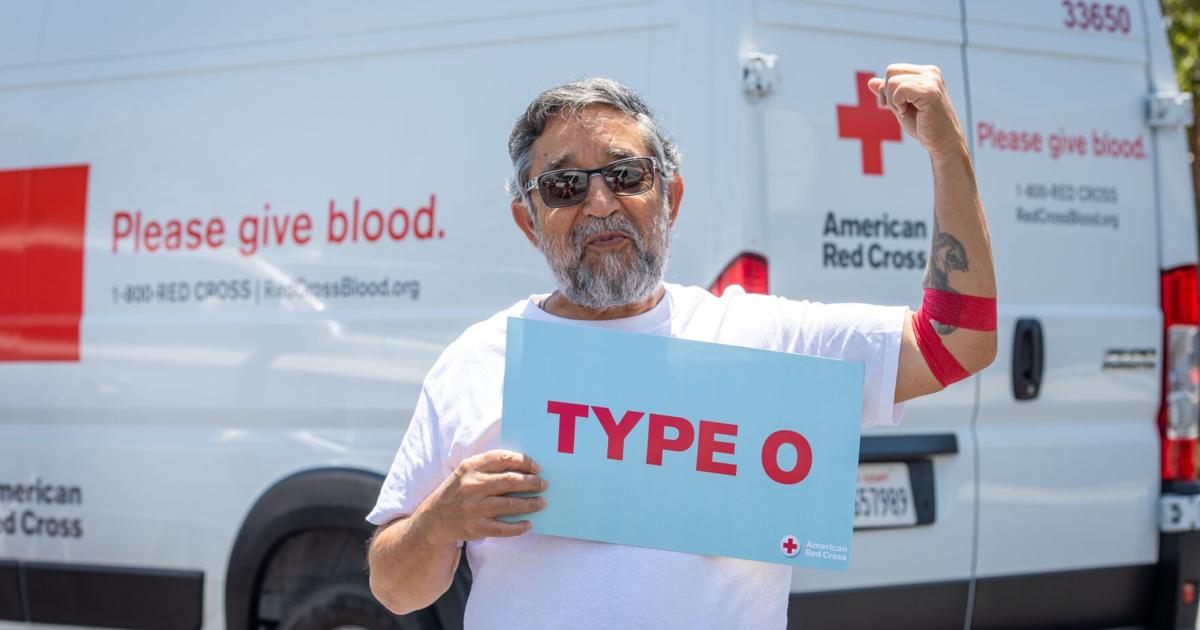Blood
Tedesco: Red Cross seeks help meeting blood needs
Since the COVID-19 pandemic struck three years ago, most people have experienced the effects of product shortages at one time or another. When that product is blood, however, lives hang in the balance, and the American Red Cross, which supplies more than 40% of the blood used by hospitals in the U.S., is currently facing a national blood shortage.
The current shortage is not attributed to COVID, but rather to the cyclical nature of giving patterns, when summer activities, holidays or treacherous winter weather can produce dips in donations. Fewer donors than needed gave this summer, drawing down the national blood supply and reducing distributions of some of the most needed blood types to hospitals.
Right now, hospital demand for blood products is outpacing the number of donations coming in. In late summer, the Red Cross’s national blood supply dropped by about 25% on the heels of one of the busiest travel seasons in recent years and the beginning of back-to-school activities. This, coupled with an active disaster season, created a perfect “storm” and is challenging the organization’s ability to collect a sufficient amount of blood products to meet the needs of hospitals across the country. When Hurricane Idalia slammed into the Southeast — leading to widespread power outages, travel hazards and flooding — the storm also strained the blood supply with scores of blood drive cancellations and reduced blood and platelet donations in affected areas. Idalia and other weather-related events, including the intense flooding in Vermont, further compounded a shortfall of about 30,000 donations in August.
People are also reading…
Another ongoing challenge to collecting enough blood to meet demand is a changed work culture influenced by the pandemic. As people settle back into fall school and work routines, many employees continue to work from home or in a hybrid capacity, reducing the number of opportunities to give blood at business-sponsored blood drives. In fact, before the COVID-19 pandemic, more than 800,000 blood donations were made at blood drives hosted by businesses. Last year, the Red Cross saw only about 500,000 blood donations at these locations — a nearly 40% drop from pre-pandemic levels.
A strong national blood supply is critical to being able to provide routine and timely care for patients. Cancer and sickle cell patients rely on blood donations for lifesaving treatment. Mass casualty events, like the bus crash on the New York State Thruway just outside of Auburn two years ago, can result in a huge demand for blood products to treat trauma patients. Unlike other commodities, most blood products have a short shelf life and cannot be stockpiled, so the demand is ongoing and can outpace supply/donations at times. The Red Cross is asking donors not to wait to give. People across the country depend on the generosity of blood donors.
Donors of all blood types are urgently needed, and there is an emergency need for platelet donors and type O blood donors. Type O negative blood is especially important, as it can be transfused to patients of all blood types, which can be lifesaving when trauma doctors have no time to determine blood type for a patient with life-threatening injuries. Making an appointment is easy and can be done in three ways:
• Download the Red Cross Blood Donor App
• Visit redcrossblood.org
• Call 1-800-RED-CROSS (1-800-733-2767)
As a thank you, those who come to give Oct. 1 through Oct. 20 will receive a $15 Amazon gift card by email. Details are available at redcrossblood.org/together.
On behalf of the Red Cross and, more importantly, the patients whose lives you will impact, thank you!
Michael Tedesco is regional communications director for the American Red Cross Western New York Region. For more information, call (315) 234-2200 or visit redcross.org.
#lee-rev-content { margin:0 -5px; }
#lee-rev-content h3 {
font-family: inherit!important;
font-weight: 700!important;
border-left: 8px solid var(–lee-blox-link-color);
text-indent: 7px;
font-size: 24px!important;
line-height: 24px;
}
#lee-rev-content .rc-provider {
font-family: inherit!important;
}
#lee-rev-content h4 {
line-height: 24px!important;
font-family: “serif-ds”,Times,”Times New Roman”,serif!important;
margin-top: 10px!important;
}
@media (max-width: 991px) {
#lee-rev-content h3 {
font-size: 18px!important;
line-height: 18px;
}
}
#pu-email-form-breaking-email-article {
clear: both;
background-color: #fff;
color: #222;
background-position: bottom;
background-repeat: no-repeat;
padding: 15px 0 20px;
margin-bottom: 40px;
border-top: 4px solid rgba(0,0,0,.8);
border-bottom: 1px solid rgba(0,0,0,.2);
display: none;
}
#pu-email-form-breaking-email-article,
#pu-email-form-breaking-email-article p {
font-family: -apple-system, BlinkMacSystemFont, “Segoe UI”, Helvetica, Arial, sans-serif, “Apple Color Emoji”, “Segoe UI Emoji”, “Segoe UI Symbol”;
}
#pu-email-form-breaking-email-article h2 {
font-size: 24px;
margin: 15px 0 5px 0;
font-family: “serif-ds”, Times, “Times New Roman”, serif;
}
#pu-email-form-breaking-email-article .lead {
margin-bottom: 5px;
}
#pu-email-form-breaking-email-article .email-desc {
font-size: 16px;
line-height: 20px;
margin-bottom: 5px;
opacity: 0.7;
}
#pu-email-form-breaking-email-article form {
padding: 10px 30px 5px 30px;
}
#pu-email-form-breaking-email-article .disclaimer {
opacity: 0.5;
margin-bottom: 0;
line-height: 100%;
}
#pu-email-form-breaking-email-article .disclaimer a {
color: #222;
text-decoration: underline;
}
#pu-email-form-breaking-email-article .email-hammer {
border-bottom: 3px solid #222;
opacity: .5;
display: inline-block;
padding: 0 10px 5px 10px;
margin-bottom: -5px;
font-size: 16px;
}
@media (max-width: 991px) {
#pu-email-form-breaking-email-article form {
padding: 10px 0 5px 0;
}
}
.grecaptcha-badge { visibility: hidden; }

